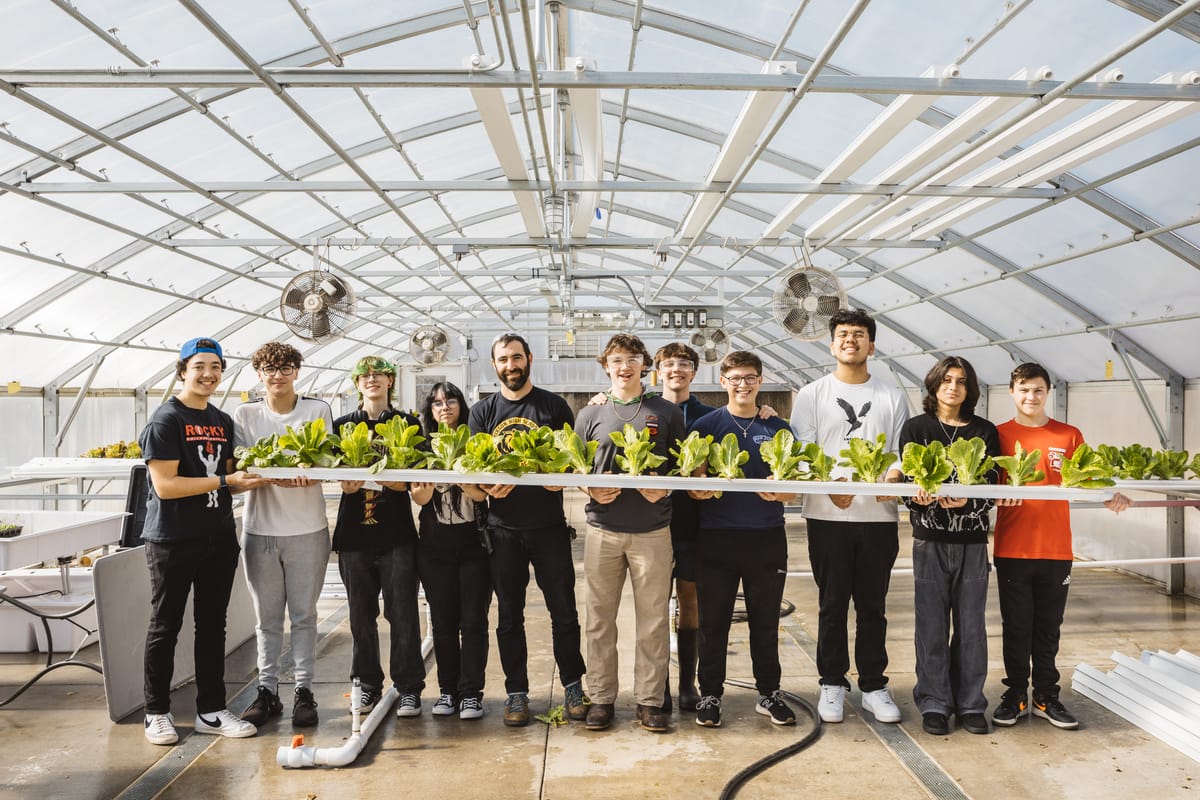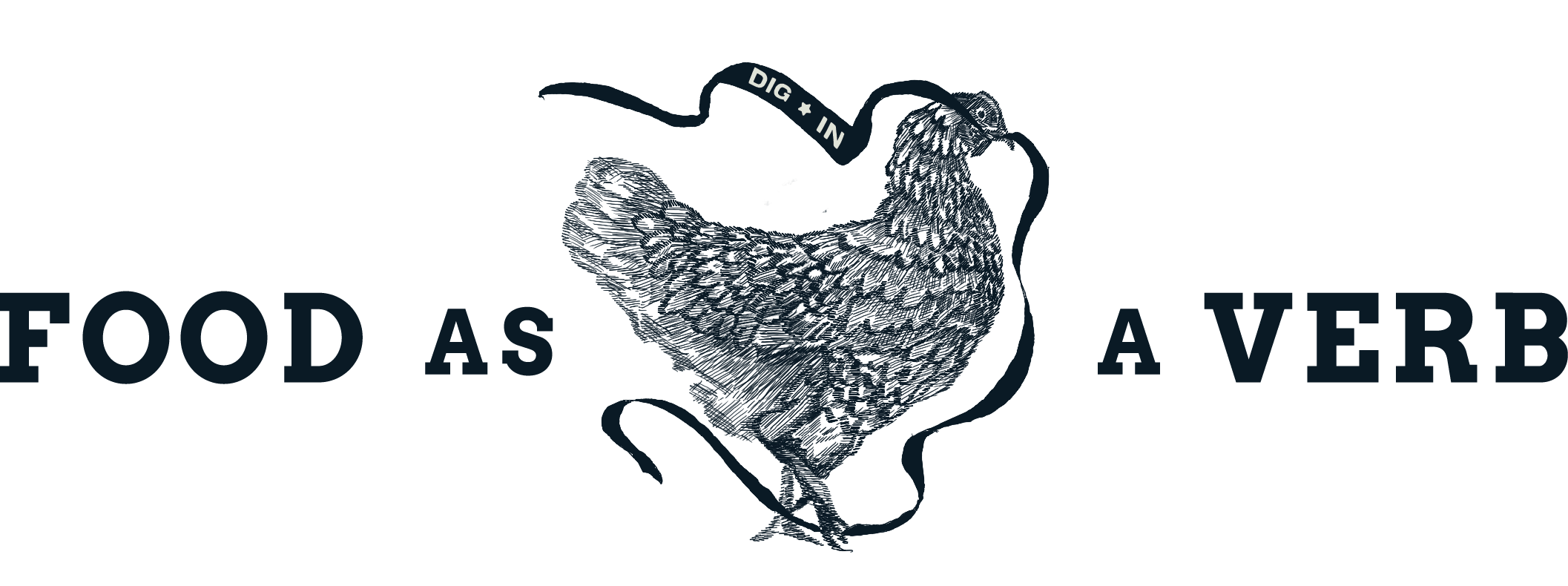Welcome to Hixson's Farm-to-School program, where students grow, cultivate and sell their own food.
What did you do at school today?


"It has an impact on other people's lives."
For the entirety of my formal schooling career – elementary, middle, high, college, post-graduate – I was agriculturally illiterate.
I could not articulate the importance of farming in any meaningful way. (Umm, it's where people grow food?). Nor could I see the immeasurably rich connection between ecology, economy, culture and my own identity.
Never planted a seed or harvested a plant. Never stepped foot in a greenhouse. Didn't know my asparagus from a hole in the ground.
Illiterate. I lived in a make-believe world. Food just ... appeared ... on my plate.
Sure, I knew Latin, Calculus and Camus. I spent 13 years in K-12 mandatory education. Just like you. Just like your children.
Over those 13 years, students spend an average of nine months per year in classrooms.
Each month, 20 days of class. Each day, seven hours of instruction.
That's 140 hours per month.
And roughly 1,260 hours per year.
Over the course of 13 years, that's 16,400 hours – give or take – of mandatory schooling.
Of those 16,400 mandatory hours, how many are reserved for agriculture?
Farm management?
Plant science or soil cultivation?
Out of 16,400 hours, how many hours do students spend in greenhouses, fields or orchards? How many hours do they spend with their hands in the soil?
Few, if any.
American education prioritizes many things, but farming, agriculture and the growing of food are often not among them.
Imagine if our schools taught agriculture and horticulture the way they prioritize STEM. Or literature. Or, let's be honest: athletics.
Imagine if we graduated agriculturally literate students who, in the words of the National Research Council, could "understand the food and fiber system and this would include its history and its current economic, social and environmental significance to all Americans."
Imagine the healing – within us and our land – that could occur.

So, it was with great delight and anticipation that we visited Hixson High earlier this winter, where students are doing the most remarkable, groundbreaking, transformative and beautiful work.
They're part of Hixson's Farm-to-School program.
They grow their own food.
And sell and share it with others.
"It has an impact on other people's lives more than ours," said Caleb Jackson, a senior.

Just around the corner from their compost bin, there are two Hixson High greenhouses where students grow 100s of pounds of produce – rainbow chard, lush heads of Bibb and Romaine, dinosaur kale – in dozens of hydroponic channels.
More plants have been started: tomatoes – lemon boy, yellow minis, Cherokee Purple – and peppers, herbs, ferns, indoor plants, succulents, native plants, annuals, sunflowers and hanging baskets of geraniums and citronella.
Thanks to a partnership with Hamilton County's School Nutrition Program, their Farm-to-School produce is used in middle and high schools and sold to local restaurants.

It's all part of the larger Agricultural Science program at Hixson, where, each year, more than 100 students enroll in a series of yearlong courses:
- AgriScience, Level 1
- Principles of Plant Science and Hydro-culture, Level 2
- Greenhouse Management, Level 3
- Unmanned Aerial Vehicles (drones) in Agriculture, Level 4
They earn OSHA-10 occupational safety certification and ServSafe Food Safety Certification. They learn hard skills in business management and soft skills in cooperation, clear planning and responsible action.
They learn sustainable growing practices. Networking. The joys of growing food and serving others.
"Our true goal? Make everything as efficient as possible," said Caleb. "Working together, communicating together, not making mistakes."
Caleb Jackson. Somebody out there, jot down his name, so when he comes with resume in hand, you'll know: this is the type of guy you want on your team.

Write down all their names. All these students seem to lean forward into their work, with delight, intention, curiosity. It is one of the least bored, most engaged classes I've ever seen.
Why?
They're doing work that is relevant and life-changing.
First, Hixson High students provide produce for their own dining service or the adjacent middle school's cafeteria. So, when students or teachers grab a salad or add lettuce to their wraps or sandwich, they're using lettuce grown by the very students in line next to them.
They also provide produce to other Hamilton County schools, as well as Il Primo, Bread & Butter and Mac's Kitchen & Bar, they said.
On April 6, they'll serve and sell to you. As part of its student-Community Art Festival, Hixson High holds its annual plant sale from 10 am to 4 pm.

At Hixson, we first said our hellos inside Lee Friedlander's classroom – we'll get to Lee momentarily – who then stepped outside into the hallway, allowing his students to speak freely with us. It was a gesture of trust and maturity, one that spoke volumes.

Food as a Verb thanks Tucker Build, our sustaining partner, for its generous support.
Tucker Build offers Chattanooga a commercial construction firm made up of design-build experts specializing in the planning, building and managing process.
"I think food is very, very important. It matters a lot to me," said KC Arledge, a junior. "I want to go into this in my career."

KC easily envisions a future: majoring in ag + business in college, starting a business. "I like the idea of providing for others."
So many students echoed KC's pride, thoughtfulness and vision. Theoretical book knowledge gets subsumed by hands-on, experiential learning. Here, true education emerges.
Here, learning happens by doing.
In the doing ... something else blooms: understanding, pride, love.
"We started all these vegetables," KC said.

When the students walk into the first greenhouse – one hydroponic; the other, traditional – they fall into a practiced rhythm, washing hands like surgeons and slipping on nitrile gloves.

Friedlander gives instructions. Says them once. No need to repeat.
"Let’s start with 70 heads and see how that goes," he says.
Students fall into work.
Removing hydroponic hoses. Lifting up trays. Gently harvesting heads of lettuce. Washing, sorting and selecting, boxing up in Brute Rubbermaids.


Hudson Shipley, KC Arledge, Charles Rucker, Hixson High greenhouse, Hixson, Tenn.
In the warm greenhouse air, they work with ease and determination. We never saw one cell phone our entire visit. The class feels singular, cohesive.
"The seeds are really tiny. You can't tell where you're planting them," said Tate Core, a sophomore. "You have to pay attention."
You have to pay attention.



Alexis Zarco, Carlos Miranda, Nate Castro, Hixson High greenhouse, Hixson, Tenn.

You can't help but imagine how present-day work will shape their future selves.
I was in my 30s before I learned how to grow my own food.
These students – agriculturally literate in so many splendid ways – are 15.

They haul waste out to the New Terra compost bin.


Nate Castro, Hudson Shipley, Hixson High, Hixson, Tenn.

Notice our story so far. At the center of all the action and work? Teenagers.
This story is theirs.
This is by design.
In the corner, watching over the greenhouse, stands Friedlander.
His students are running on auto-pilot. There are very few questions. It's as if Friedlander isn't even there.
They don't seem to need him very much at all.
"That's the idea," he said.

Hixson High plant sale: April 6, 10:00 am - 4:00 pm.
Left: Liam Arnold, pressure-washing hydroponic channels post-harvest.

On the day before the 2011 school year began, Friedlander's phone rang. It was the Hixson High principal.
Lee, would you like to come help us start an agricultural education program here?
Friedlander grew up in Florida – "I love science, love nature, love the water," he said – and earned B.S. in Environmental Science and M.S. in Agricultural Operations Management from Univ. of Florida. His career took him to the Tennessee Aquarium, where he built a resume in conservation agriculture.
"I learned a ton about collaboration at the Aquarium. How to leverage partnerships between government organizations and private non-profits to deliver meaningful results," he said.
He was the perfect person to call.
When Hixson High asked, Friedlander said yes.
In 2011, he began leading the capital campaign that would build the first of two greenhouses.
"These were parking spaces at the time," he said.

Chattanooga responded. Multiple public and private donors. The Weldon Osborne Foundation. The Community Foundation of Greater Chattanooga, which later funded a hydroponic retrofit of one of the greenhouses with a clear mission:
Let's start a farm-to-school program at Hixson.
He couldn't do it alone. Friedlander mentions his colleagues:
"Mr. Sims, the principal. Joyce Perdue, the curriculum coach. Our bookkeeper Janie Bargerstock. Our secretary, Nina East," he said. "I'm going to cry when she leaves."
Like any undertaking, there have been missteps. "I can tell you 10,000 things not to do," he said.
One big challenge as they continue to expand?
"Logistics," he said, nodding to truck bed of his nearby Tundra. "I am the logistics."
Class winds down. Another period is about to begin. Turning to Friedlander, one student asks what others are thinking:
Can we just stay in your class?

"We are making a big impact on the school being able to deliver fresh and delicious vegetables," said sophomore Raul Zavala as we were leaving.
What a splendidly literate and wise thing to say.

All photography by Sarah Unger (sarah@foodasaverb.com)
All design by Alex DeHart
All words by David Cook (david@foodasaverb.com)
This story is 100% human generated; no AI chatbot was used in the creation of this content.
Story ideas, questions, feedback? Interested in sponsorship opportunities? Email us: david@foodasaverb.com and sarah@foodasaverb.com.
Food as a Verb thanks our sustaining partners for their generous support.






Society of Work is a shared coworking space designed with business flexibility in mind and the resources to help like-minded people connect and create amazing things together. From private offices to 24/7 coworking memberships, we provide the space you need to get work done. Thanks to two-time James-Beard nominee Erik Niel, Easy Bistro & Bar offers unparalleled and deeply thoughtful dining in the heart of West Village. Female-and-locally owned, Divine Goods offers beautifully curated gifts for every occasion. Be divine and send someone special a Divine Goods gift - locally sourced when possible, and always thoughtful. Niedlov's Bakery & Cafe, a Main St. anchor, has elevated our city's bakery experience to beautiful levels while strengthening community in immeasurable ways. For more than 25 years, Lupi's has served locally-sourced, creatively made and award-winningly delicious pizza pies from five nearby locations. The Chattanooga Area Food Bank believes that no one should go hungry, and through our network of over 250 hunger-relief partners, we provide equitable access to food and resources to end hunger today and build pathways for a healthy, hunger-free future tomorrow.
